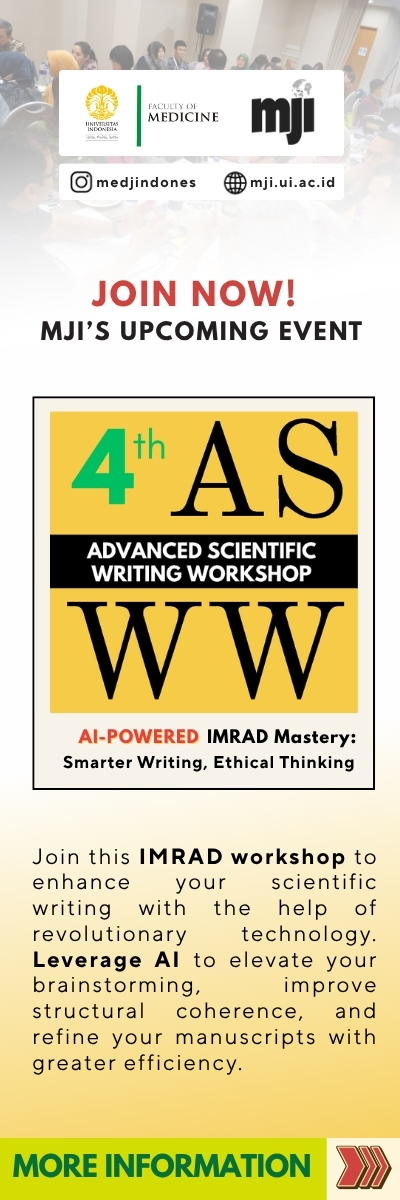Comparative study between aspirin to acenocoumarol in regressing spontaneous echo contrast in mitral stenosis
DOI:
https://doi.org/10.13181/mji.v11i4.74Abstract
Mitral stenosis is one of the most often valvular disease in Division of Cardiology, M. Hoesin hospital, Palembang, and there was strong evidence of thromboembolic phenomenon in mitral stenosis (MS) patients. Many studies evaluated the spontaneous echo contrast (SEC) that was regarded as a precursor of thrombo embolic phenomenon. So far there were controversies regarding how to regress spontaneous echo contrast. A randomized double blind controlled study was done on 22 MS patients with positive SEC, receiving either aspirin 100 mg or acenocoumarol 1 mg and followed up after 4 weeks. There was 100 % regression of SEC in acenocoumarol group that consisted of 40% regression from severe SEC to mild, and 60% complete resolution. In aspirin group there was no resolution of SEC. In acenocoumarol group, 2 of 4 thrombus totally disappeared while the rest was reduced in size. On the other hand, in aspirin group, after 4 weeks, the patients with thrombus was increased from 3 to 4 patients. In conclusion, four week therapy with acenocoumarol 1 mg is effective and save in regressing spontaneous echo contrast and thrombus in mitral stenosis patients without any significant change in hemodynamics. (Med J Indones 2002; 11: 202-7)
Keywords: thrombus, thromboembolic phenomenon, transthoracal, esophageal, echocardiography
Downloads
Downloads
Published
How to Cite
Issue
Section
License
Authors who publish with Medical Journal of Indonesia agree to the following terms:
- Authors retain copyright and grant Medical Journal of Indonesia right of first publication with the work simultaneously licensed under a Creative Commons Attribution-NonCommercial License that allows others to remix, adapt, build upon the work non-commercially with an acknowledgment of the work’s authorship and initial publication in Medical Journal of Indonesia.
- Authors are permitted to copy and redistribute the journal's published version of the work non-commercially (e.g., post it to an institutional repository or publish it in a book), with an acknowledgment of its initial publication in Medical Journal of Indonesia.





































